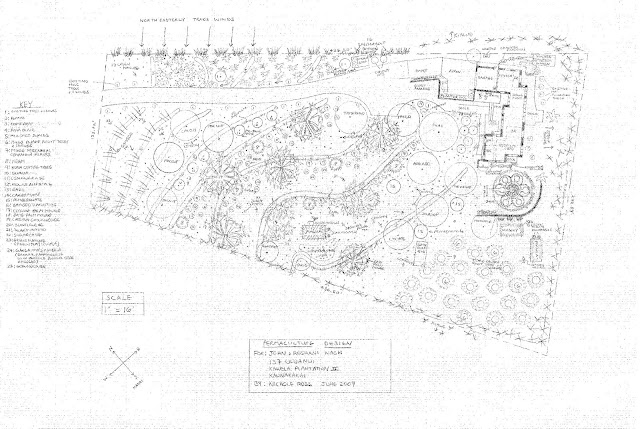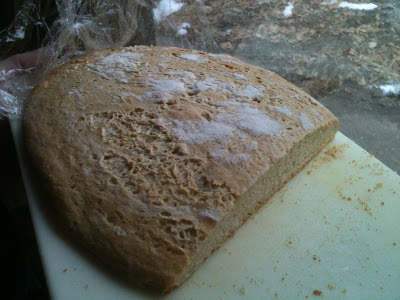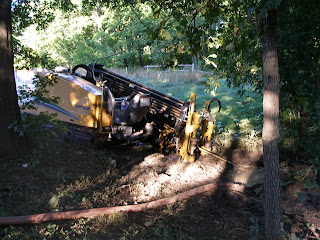SouthWoods Permaculture Design Student Digs Hawaii
One month later…
Nicole Ross was a student in the Winter Homestead Design class of 2009. She and family started teaching in Hawaii and implemented projects for homesteaders in 2010.
Nicole's design implementation in Hawaii, via Australia PRI Article by Jill RossOn November 15th, a group of relative strangers gathered on the dry, red dirt of Moloka’i with the same question firing in their minds. How will we create permanent agriculture on this parched, eroded acre of red dust?
Once the proper introductions were made, our fearless leader, instructor Andrew Jones faced the burning question head-on. Both class and client got a quick review of the Permaculture design process before heading out for a site tour. Site conditions (minimal rainfall, soil erosion, landscape slope) and the challenges of a bustling axis deer super-highway bisecting the property were observed then discussed.
The next day’s visit to Perma-farmer Joe Kennedy’s 25 acres provided numerous examples of effective dry land systems. Dragonflies and bees bustled around the shady ponds he created, in sharp contrast to the neighboring expanse of Monsanto-land. We reaped many benefits from Joe’s 20 plus years of dedication to sustainable agriculture, the tastiest being the bucket-loads of produce we harvested from his farm (Sri-Lankan & cholesterol spinach, pomegranates, tropical almond papayas, 2 types of bananas and more).
In the afternoon we focused on water-harvesting techniques and a Baja case study involving heavy swale work. Then we got down to the business of constructing our swale survey tools (A-frame & bunyip) for measuring the contour lines for flagging the initial swale.
The next morning, we reviewed the design for the project and discussed additions including; deer exclusion strategies, water storage and expanding the potential plant species selection. A bustling axis deer super-highway means anywhere from 15-60 deer cruising directly through the site, everyday, looking for grinds. After much discussion, we decided to start planting areas closer to the house, and seeding the outer zones. Later in the week, a visit to the neighbor’s property would inspire us to try their solution to the crop-grinding deer problem; a tall thorny kiawe fence built from abundant on-site kiawe. It was a beautiful example of art in function. The sun-bleached wall of thorny bones, reaching out to protect its green charge. Less than a week after the course was finished, the clients built their own.
After lunch that day, we marked out the remaining swales and designed the kitchen garden using existing materials (relocating heavy planter boxes from the deer roadside rest stop to a space nearest to the well-used kitchen).
The following morning we were up before the sun, and fortunate enough to watch it light up Moloka’i from a friend’s sailboat as we cruised to the outer reef. An hour of snorkeling gave us a chance to appreciate Moloka’i’s blue underworld.
On our way back from the harbor, we contacted four potential earthmovers to carve our swales. We ended up finding Uncle Ray. Not only did we get the island’s best, we got two loads of mulch (free from dump) delivered before the sun went down. We investigated the piping system for grey and black water, working out the diversion of grey water from the leach field to the banana circle. If you’re gonna shower, you might was well grow some food. Wash your hands, water your taro.
After breakfast we were greeted by Uncle Ray, Penny and their heavy machinery. Once they fixed the driveway, they began fixing the site. Two consecutive “banana circles” or mulch gardens in the shape of a figure 8 and the lower swale and part of the second were dug. The swales were mulched and the greywater was re-directed to the mulch gardens. After we investigated the existing irrigation system layout, we walked over to the neighbor’s house in the golden light, waiting for the “green flash” to see their beautiful gardens and meet their magnificent fence.
The next day, at 7:00 am, Uncle Ray and Penny were at it again, completing the second and third swales. From Farmer Joe’s, we collected plant keikis (banana, taro, sweet potato). We rounded the deep pits dug for our “banana circles” and reinforced their outer walls with rocks found onsite. We mulched the pits with waste materials gathered from the site and stomped them down doing our little “danse composte” as we layered in dump mulch. After filling them to three feet above ground level, we watered down our giant stone-lined figure 8 to give the composting process a proper start. After planting the first of the circles with bananas, sweet potatoes and squash, we gave her another drink.
The final day of class was a busy and emotional one. We finished the top and final (or so we thought) swale, collected aged manure from a local paniolo for the kitchen garden, gathered and prepared additional wild-gathered seed for swales, harvested and diluted ocean water for the pre-existing fruit trees and the keikis in our crazy 8. After the course was wrapped up and evaluations were collected, it was so hard to leave this incredible group that instructors and faculty (Andrew, Nichole and I) almost missed our flight home to the Big Island. My last look at those four giant sleeping swales, snaking across the site, filled me with such joy and hope, hope for rain. Most of the students and the clients stayed on to tour Robin and Dano’s world-renowned perma-farm on the East side and get more plants and seeds into the quickly rehabilitating soil onsite.
After the students left, the work continued. First, our inspired clients took it upon themselves to build their own Kiawe fence. Then, ironically, the night the first big rains came in, their good friends, Robin and Dano happened to be at their home just in time to witness the swales fill to the top. The fab four put their heads together and calculated that, from those rains, 75,000 gallons of water was held in the ground instead of being dumped into the ocean where it chokes out the reef with eroded soil.
After the rain, the clients carefully observed the evolution of the swales and made necessary adjustments. They found mushrooms in their swales, a clear indicator of moisture retention. By observing the way the rainwater charged through the swales, they also determined that a fifth swale was needed. So they gave Uncle Ray a call, and got it done. This work was done only a month ago, working with what we had, using local resources – all chemical free. Looks like Permanent Agriculture to me.
I’ve learned that Permaculture courses are often more than educational experiences designed to promote sustainable living. When people from varying backgrounds and generations tune their minds and actions into the harmony of a shared goal, a truly moving lesson in human-potential is learned. The teachers, students, clients, locals, contractors, faculty, family, friends and neighbors involved create a great human exchange. In the sprit of such flawless cooperation, we reshaped the earth to position it in time for Molokai’s allusive rainy season. Our clients are comforted in knowing they are now catching and keeping their topsoil. When our minds are focused and our actions are supported, we can move the Earth in beautiful ways.
On that note, I offer my heart-felt thanks to the following people for making this great work possible. To our clients, for their endless support and hospitality. To Farmer Joe for his generous supply of greens and keiki plants. To Angel Frau and her whirling dust devil of a husband for their utter joy of life. To Ali’i Tasi for her great love and dedication to Hawaii and her people. Mahalos to Auntie Bertha, what an honor to meet such a vital and gifted member of the community. To Uncle Ray and Penny for artfully moving the earth to heal the damage done by years of erosion. To Spurdy for having the intelligence and courage to clean (and mop!) the kitchen of the crowded house wearing only an expertly tied sarong. Thank you Nichole and Andrew for mastering the delicate balance of structure and chaos necessary to obtain true knowledge. To the up-and-comers, the bright and ambitious ones who have a lot of work ahead of them; Hunter, Rob, Eric and Laura, thanks for giving a damn and having the courage to do something about it. Mahalo Nui to Uncle Billy. On a magical night at Hotel Moloka’i, his words set the tempo for this great human experience. “You always gotta come from da heart, and Molokai is from da heart”. Good words to live by.
I’m forever inspired by this outstanding group of characters, and I eagerly wait to roll up my sleeves with the next class. At this moment, strangers from strange places unknowingly wait to become life-long friends. Judging by the momentum created from the connections made, I won’t be waiting long. Check the website for up-coming Moloka’i and greater Hawaii courses. Aloha and a hui ho.
* Our hosts/clients Roshani and John Nash wished to be named in the article. Their support and passion for Permaculture was key to getting this important work done. The fifth swale wasn’t done by Uncle Ray, they in-fact hand dug it.





Comments